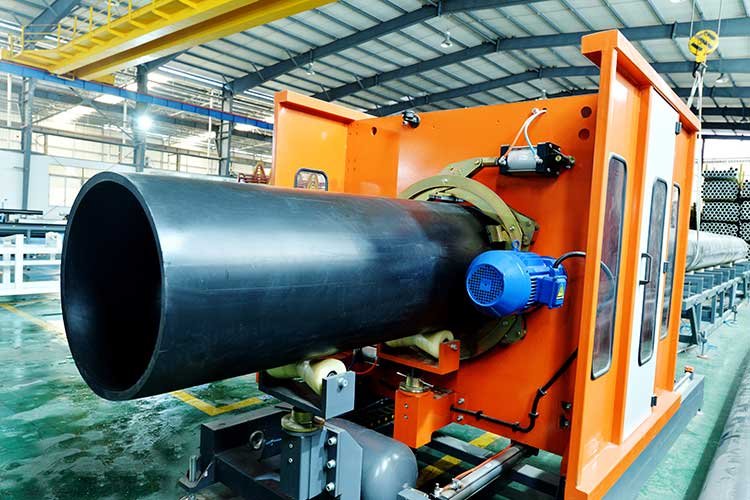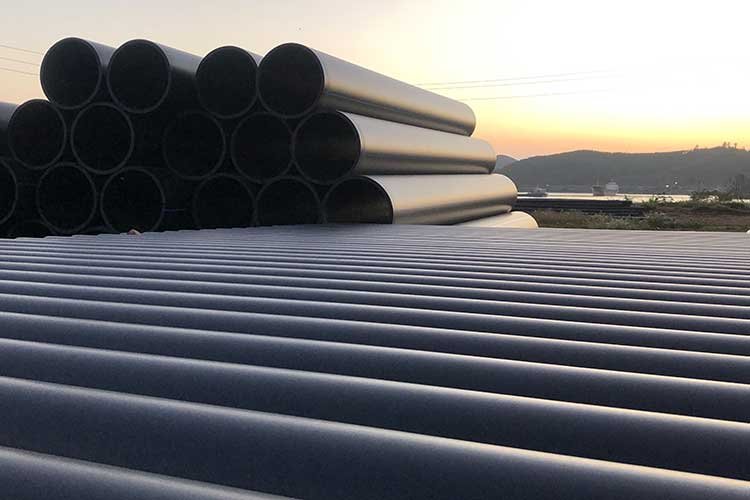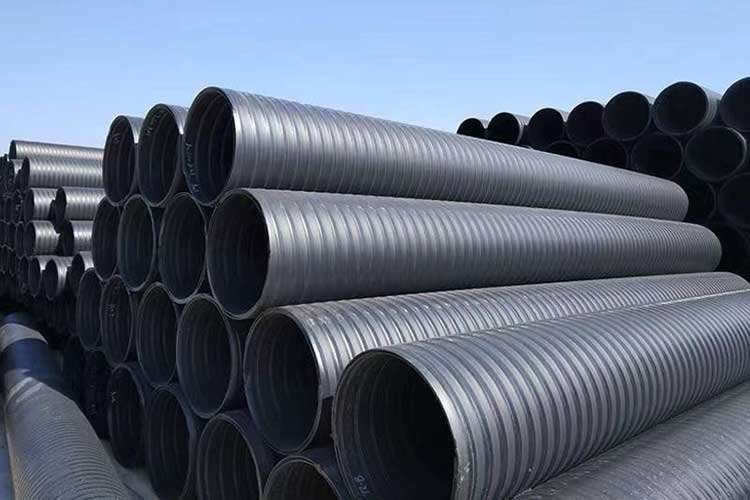Plastic pipes are widely used in many fields due to their advantages such as light weight and corrosion resistance. However, their high temperature resistance varies significantly due to material type, modification technology and application scenarios.
Temperature resistance range of common plastic pipes
PE pipe
PE pipes have weak temperature resistance, with a long-term upper temperature limit of 60°C and a short-term temperature resistance of up to 80°C. However, through nano-modification or the addition of reinforcing materials such as glass fiber, some HDPE pipes can withstand high temperatures of 150°C for a long time, and the Vicat softening temperature is above 150°C, making them suitable for high-temperature crude oil transportation in oil fields.
PVC Pipe
PE pipes have weak temperature resistance, with a long-term upper temperature limit of 60°C and a short-term temperature resistance of up to 80°C. However, through nano-modification or the addition of reinforcing materials such as glass fiber, some HDPE pipes can withstand high temperatures of 150°C for a long time, and the Vicat softening temperature is above 150°C, making them suitable for high-temperature crude oil transportation in oil fields.
Engineering plastic pipes
Polyimide (PI): Long-term temperature resistance of 350°C and short-term temperature resistance of 450°C. It is currently the best heat-resistant engineering plastic, but it is expensive and is mostly used in special fields such as aerospace.
Modified FRP pipe: A composite pipe reinforced with fillers such as silicon carbide and boron nitride, with a temperature resistance of up to 600°C (such as UNI H series hose), suitable for high-temperature scenarios such as engine exhaust emissions.

Technical path to improve high temperature resistance
Material modification technology
Reinforced fillers: Adding inorganic fillers such as glass fiber and boron carbide can improve the temperature resistance of PVC and PE. For example, in the patented technology, glass fiber and silicon nitride are compositely modified to increase the long-term temperature resistance of PVC pipes to 100°C.
Flame retardant and heat insulation structure: The double-layer design of flame retardant layer and heat insulation cotton is adopted to block the heat conduction of external high temperature to the pipe body. A patented technology uses heat insulation cotton filling to make the radiation temperature of the outer surface of the pipe reach 280°C.
Composite Pipe Design
Metal-plastic composite: Aluminum-plastic composite pipe combines the pressure resistance of metal and the corrosion resistance of plastic, and the temperature range is extended to -70℃~110℃, which is suitable for areas with drastic temperature differences.
Multi-layer structure: For example, UNI H series hose adopts a multi-layer design of spiral steel spring + high-temperature resistant fiber, which can withstand temperatures up to 600℃ while maintaining flexibility.
Testing and Verification
Thermal aging test is the core method to evaluate temperature resistance. For example, PE pipes are placed in a high temperature test chamber to simulate a 200°C environment, and their thermal stability is verified through indicators such as tensile strength and weight change. Shandong Fangda New Materials confirmed through third-party testing that its modified PE pipes have no performance degradation at 150°C.

High temperature scenarios and selection suggestions in applications
Industrial high temperature medium transportation
Oilfield: Modified PE pipes (resistant to 150℃) are used for high-temperature crude oil transportation, with a wear resistance 10 times that of traditional steel pipes, and a cost reduction of 80%.
Chemical industry: PI or FRP composite pipes (resistant to 400℃~600℃) are used for highly corrosive gas emissions, such as UNI H series hoses used for engine exhaust treatment.
Construction and Municipal Engineering
Hot water system: PP-R aluminum-plastic composite pipe (resistant to 110℃) is superior to traditional PP-R pipe, reducing the risk of thermal expansion and contraction.
Fire protection and HVAC: Flame-retardant modified PVC pipe (resistant to 95℃) is matched with fireproof casing to meet the needs of fire smoke exhaust.
Adapt to various environments
Low temperature environment: HDPE pipes can withstand low temperatures up to -70°C, suitable for water transport in cold and high-altitude areas.
Instantaneous high temperature: PI pipes can withstand 450°C in a short period of time, suitable for instantaneous high temperature scenarios such as spacecraft hydraulic systems.

Conclusion
The high temperature resistance of plastic pipes varies greatly due to differences in materials and processes: the temperature resistance of ordinary PVC/PE pipes is mostly between 45℃ and 95℃, while modified or composite pipes can reach 150℃ to 600℃. The selection needs to be combined with the medium temperature, environmental conditions and cost.